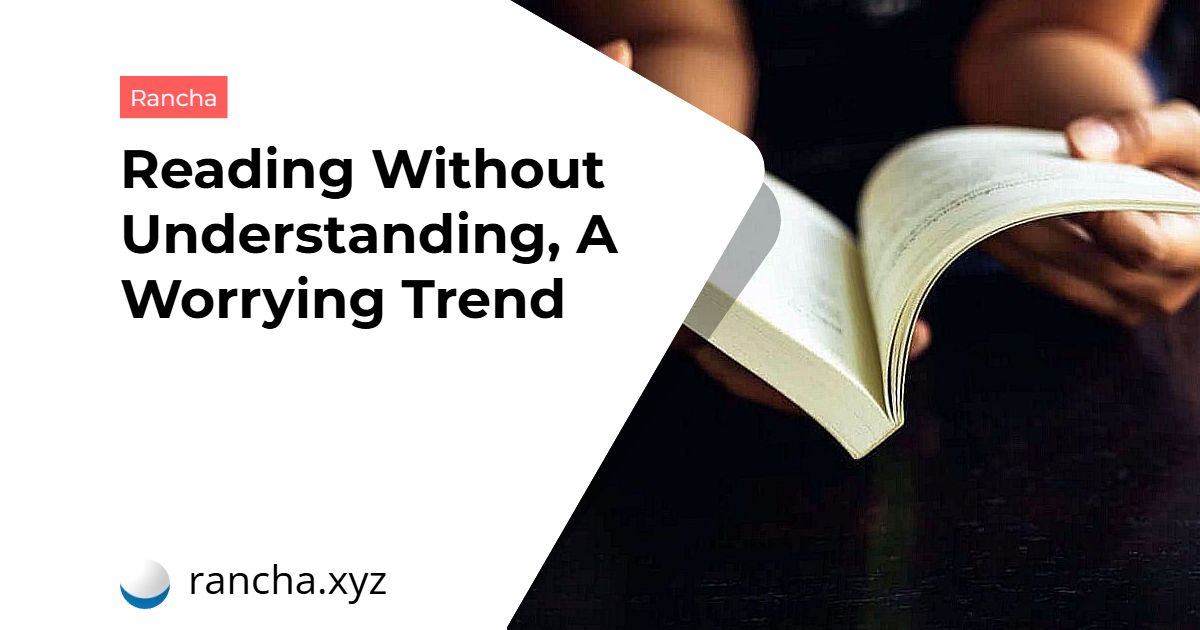Certainly, many of us at some point have asked ourselves what really defines us, what we want to delve into or discover. All this can be found in books. Reading seems to be the ideal solution, because there is no better way to see in a new light not only the outside world, but also our inside. But do we really understand what we read? Do we really assimilate all that a book can give us? Why is reading without understanding becoming more and more common?
Books are an immense source of knowledge, but also of pleasure, because what attracts us most is pure entertainment. However, we often forget some of its most important benefits, such as the infinite and valuable wealth of instruction and wisdom.

Shallow reading: reading quickly without understanding anything
Today, ipads , tablets , smartphones and video games end up relegating classic books to the background. A habit that is now considered normal, but which is worrying considering the time and understanding that younger people devote to reading.
Ziming Liu, Ph.D., at San Jose State University in California, has conducted several studies on a practice known as skimming , which can be translated as “flying”.
In one of his researches carried out in 2005, entitled Reading Behavior in the Digital Environment: Changes in Reading Behavior Over the Past Ten Years (In Portuguese, Reading Behavior in the Digital Environment: Changes in Reading Behavior in the Last Ten Years), Liu concluded that the habit of digital reading is characterized by more time devoted to scanning and scanning, keyword detection, single reading, non-linear reading and more selective reading, while less time is devoted to in- depth reading and concentrated.
In addition, he observed a considerable decrease in sustained attention while reading.
Diagonal reading, the most common trend among young people
Diagonal reading is a method of reading the first line of a paragraph and, without concentrating on any particular word, looking from the left side diagonally to the right corner. It’s something like “flying”: the mind will stop only at the words that stand out the most.
This is the most common trend among young people. A quick way to read that allows you to assimilate certain concepts as if you really understood the whole context from which they were extracted.
For Patricia Greenfield, a psychologist at the University of California at Los Angeles, this goes against the very nature of reading. She herself makes clear in his reports that the reading requires an environment conducive and stages, fundamental and specific to culminate in knowledge, and if we skip any of them, the result will be incomplete and, in many cases, even wrong. So why do we sometimes read without understanding?

The “age of anxiety” prevents us from reading a book calmly
The culture of immediacy in which we have been immersed in recent years is a concept closely linked to technology. We want everything now. However, the problem is that this is inappropriate for reading; reading is an act that requires concentration, serenity and patience to understand certain concepts or expressions in a text, and this can only be done gradually.
Another study, published in the journal Child Psychiatry Human Development in 2011 and conducted by expert psychologists at the University of Houston, Texas, looked at the influence of anxiety on the reading habits of elementary school children in the United States. The researchers came to the conclusion that income drops considerably for both boys and girls.
The study identifies anxiety, especially that associated with technology, as a detrimental factor for reading comprehension and academic performance.
Reading is a process that involves not only understanding the words or punctuation marks in a text, but also understanding what we read, broadly and with perspective. It also involves discovering the historical context of a book or the time when it was written, as well as understanding the use of language literally or figuratively, the message you want to convey, etc.
 rancha.xyz Be free to choose their own route to self-knowledge, health and balance of body and soul.
rancha.xyz Be free to choose their own route to self-knowledge, health and balance of body and soul.




